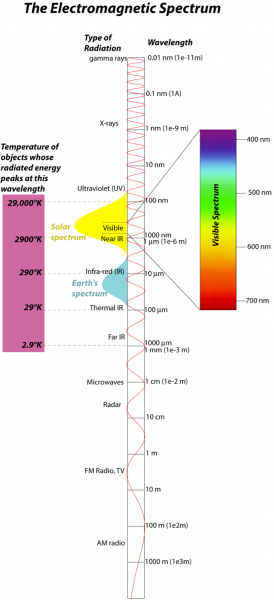Brief Review of Electromagnetic Radiation
The energy we are concerned with here comes in the form of electromagnetic radiation, so it will help us to review some aspects of this form of energy. Electromagnetic (EM) radiation comes in a spectrum of waves, each consisting of an electrical and a magnetic oscillation of particles called photons; this spectrum is shown in the figure below:

The electromagnetic (EM) spectrum, showing wave types and corresponding wavelengths, with the detail of the more familiar visible light portion of the spectrum. The Sun emits energy in the ultraviolet to near infrared, while the Earth emits energy entirely in the infrared. Also shown are the temperatures of objects whose peak energy emission is associated with the corresponding wavelengths, according to Wien’s Law.
Credit: David Bice © Penn State University is licensed under CC BY-NC-SA 4.0